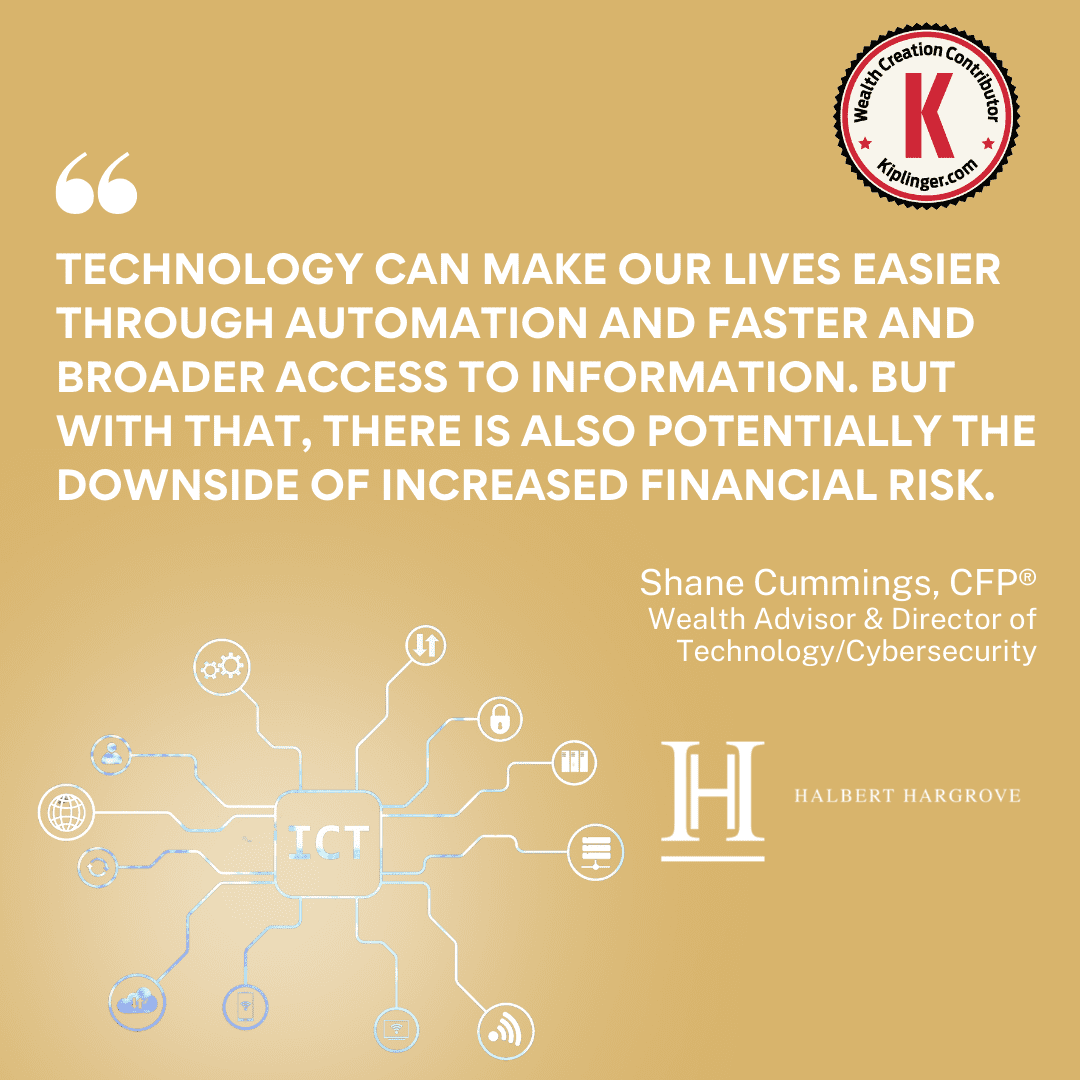By Shane Cummings, CFP®, AIF®, Wealth Advisor & Director of Technology/Cybersecurity as featured in Kiplinger
From the rising threat of identity theft to making it easy to forget about automated subscriptions, technology doesn’t always make our lives easier. Here’s what to be aware of.
In the past, we have written about ways to streamline your savings using technology or hacks to find great ways to save money, but just as technology can improve outcomes, there can be some ways it could actually complicate your finances.
Digital banking: Navigating risks and rewards
Technology can make our lives easier through automation and faster and broader access to information. But with that, there is also potentially the downside of increased financial risk. These days, banks increasingly expect customers to use their mobile apps to bank online as they shrink their physical branch networks and reduce staff. This can be great for people who prefer interacting with financial institutions online, but it does bring some risks.
For example, regardless of whether you want to use mobile banking, if you have an account with a bank or financial institution, it’s set up to register an account for you online. If you don’t do it, there is a risk that someone with bad intentions could register to access your account online, assuming they have access to some key personal details. You typically need only a Social Security number, email address and phone number to register online.
Institutions with fewer safeguards in place might not be able to verify the identity of the end user. I’m not trying to scare anyone unnecessarily, but if you take cybersecurity very seriously, this would suggest you should “plant the flag” by registering online with your bank before someone else tries to. Due to the many data breaches, basic details like your Social Security number and other personal details about you may be available for hackers or criminals to purchase on the dark web. In September 2023, it was reported that 233.9 million people have been affected by data breaches and leaks the first nine months of the year — compared to 425 million in all of 2022.


